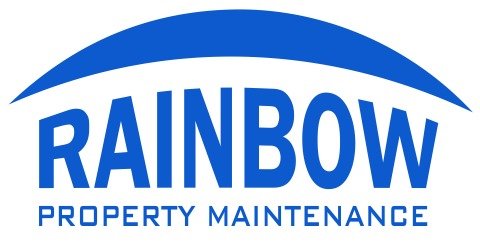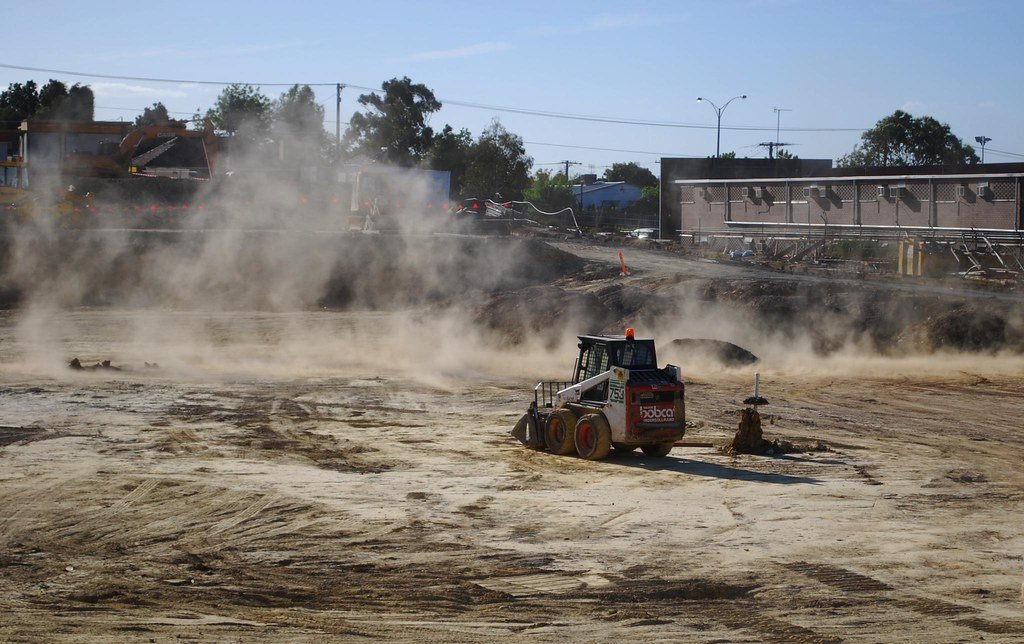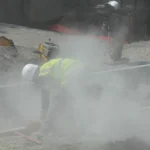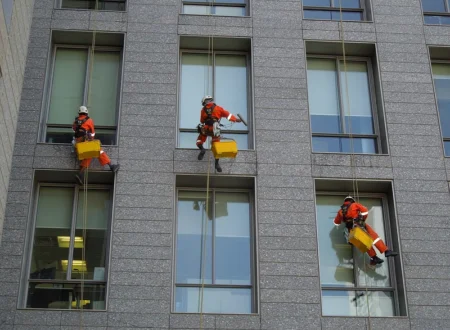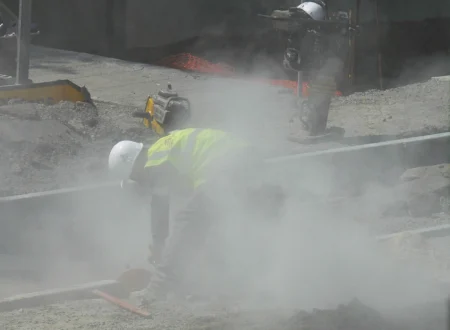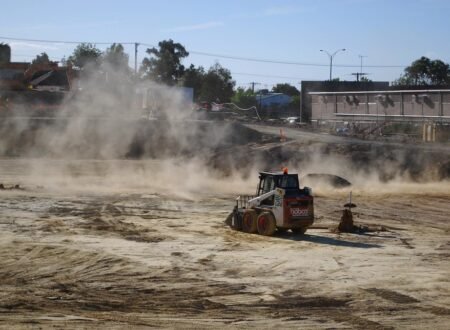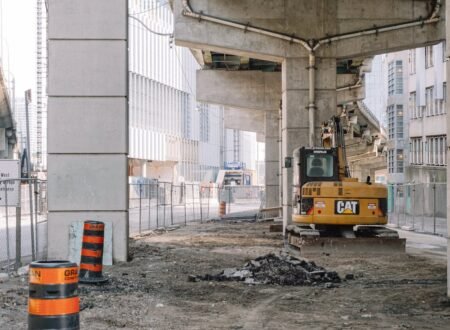Exposure to Construction Dust and Health Impacts: A Review
The construction industry is a cornerstone of urban development, but it comes with its own set of health hazards, the most notable being exposure to construction dust.
This review explores the health impacts of construction dust exposure, offering vital insights into how professional cleaning services can mitigate these risks and ensure safer work environments.
Key Takeaways:
- Understanding the serious health risks posed by construction dust exposure.
- Highlighting the role of professional cleaning services in safeguarding workers’ health.
- Exploring regulations and best practices for dust management in construction sites.
- The economic benefits of professional cleaning in the construction industry.
The Composition and Sources of Construction Dust
Understanding construction dust composition is essential for identifying potential health risks. Construction sites produce a variety of dust types, resulting from numerous materials and activities.
Materials Contributing to Construction Dust
Construction dust is a complex mixture, often comprising several harmful substances:- Concrete: When it’s cut or drilled, concrete releases fine particles into the air. These particles can be inhaled, potentially leading to respiratory issues.- Silica: Found in numerous construction materials, including concrete, mortar, and bricks, silica dust is particularly hazardous. Long-term exposure can result in silicosis, a serious lung disease.- Asbestos: Though now banned in many places, older buildings may still contain asbestos. Disturbing these materials can release asbestos fibers, posing severe health risks, including lung cancer and mesothelioma.
Sources of Dust on Construction Sites
Various activities on construction sites generate dust. Key sources of dust include:- Demolition: Knocking down structures releases significant dust clouds, comprising materials like concrete and asbestos, if present.- Sanding and Grinding: These common practices on sites also contribute to dust, particularly from wood, concrete, and other materials.- Cutting and Drilling: Such activities produce high amounts of fine dust, especially when working with concrete or stone materials.- Transporting Materials: Moving materials around the site, particularly powders and fine aggregates, creates airborne dust.
Addressing the materials in dust and their sources is paramount for developing effective control measures. As we’ve seen, it’s not just the visible dust that poses risks; microscopic particles can be the most dangerous. By understanding these elements, we can better mitigate exposure and safeguard worker health. Employing professional cleaning services, such as those detailed in our range of Commercial Cleaning Services in Chicago, is integral to managing these concerns and enhancing onsite safety.
Health Risks Associated with Construction Dust
Construction dust represents a significant health threat to workers. Understanding health risks and dust exposure effects is crucial. Let’s break down the short-term and long-term consequences of exposure.
Short-Term Health Effects
Exposure to construction dust can quickly lead to adverse effects. Workers might experience:- Respiratory Irritation: Symptoms like coughing and throat irritation can start almost immediately upon exposure.- Eye Irritation: Dust can cause redness, tearing, and discomfort.- Skin Irritation: Some materials can cause allergic reactions or rashes upon contact.
Long-Term Health Effects
Long-term exposure, however, poses even more severe risks. Chronic conditions linked to construction dust include:- Silicosis: This incurable lung disease results from inhaling crystalline silica over time. It causes scarring of lung tissue, leading to severe breathing difficulties.- Lung Cancer: Long-term exposure to certain dust, such as asbestos, increases the risk of developing lung cancer.- Chronic Obstructive Pulmonary Disease (COPD): Repeated inhalation of dust can lead to chronic lung conditions, significantly impairing quality of life.
Protecting workers from these chronic conditions isn’t just a regulatory issue; it’s a moral imperative. Regular monitoring and employing professional cleaning services can vastly reduce dust levels on construction sites. These measures safeguard worker health and enhance productivity.
For more information, we recommend you Discover our range of Commercial Cleaning Services in Chicago, tailored to help your business shine.
Regulatory Standards and Safety Measures
Ensuring a safe environment on construction sites is paramount. Addressing dust control measures effectively means adhering to regulatory standards. Here’s an overview of crucial guidelines and best practices.
OSHA Guidelines and Other Standards
The Occupational Safety and Health Administration (OSHA) provides specific guidelines to control construction dust:- Exposure Limits: OSHA sets permissible exposure limits (PELs) for various substances, including silica.- Protection Programs: Employers must implement exposure control plans. These plans detail procedures and equipment to reduce dust exposure.- Monitoring and Training: Regular air monitoring and worker training are mandatory under OSHA guidelines. Workers need to recognize hazards and learn how to minimize risks.
Other standards, like those from the National Institute for Occupational Safety and Health (NIOSH), complement OSHA’s regulations by offering additional research and recommendations. Adhering to these OSHA guidelines and other regulatory frameworks is crucial for maintaining safe construction sites.
Best Practices for Dust Control on Construction Sites
Implementing best practices can greatly limit dust exposure:- Water Suppression Systems: Using water to suppress dust during cutting, drilling, and demolition helps prevent particles from becoming airborne.- Ventilation Systems: Effective local exhaust ventilation can capture dust at the source, reducing overall exposure levels.- Personal Protective Equipment (PPE): Ensuring workers wear appropriate PPE, such as respirators, can protect them from inhaling harmful particles.- Site Housekeeping: Regular cleaning of the site to remove dust accumulation and proper waste disposal methods also play a significant role.
Together, these practices form a comprehensive approach to managing dust. It’s all about commitment to consistent enforcement and monitoring to safeguard worker health and meet regulatory requirements.
For detailed assistance and implementation of dust control measures, consider consulting with professional cleaning services. You can Discover our range of Commercial Cleaning Services in Chicago, tailored to help your business shine for more information.
The Role of Professional Cleaning Services
Understanding the pivotal role of professional cleaning in controlling construction dust is essential. Let’s delve into how specialized services manage dust and look at impactful case studies.
Effective Dust Management by Professional Cleaning Services
Specialized cleaning services have the expertise and equipment to effectively tackle construction dust. Here are some strategies they use:- Advanced Equipment: High-efficiency vacuum systems capture dust at the source, preventing it from becoming airborne.- Water Mist Systems: These systems dampen dust particles, reducing their mobility and airborne spread.- Routine Cleaning: Regular cleaning schedules help maintain a dust-free environment, significantly lowering health risks for workers.
Professional cleaning teams also conduct thorough site assessments. These assessments identify high-risk areas and tailor cleaning plans to address specific dust issues.
Case Studies Demonstrating the Positive Impact
Numerous case studies demonstrate the efficacy of professional cleaning in improving site safety:- Case Study – Construction Site A: This site experienced frequent respiratory complaints among workers. After integrating weekly professional cleanings using water suppression and vacuum systems, reported health issues dropped by 60%. Productivity saw a notable increase as well.- Case Study – Construction Site B: Faced with regulatory fines due to dust violations, this site partnered with professional cleaners. The cleaning plan included advanced dust suppression techniques and regular site assessments. Compliance was reached within three months, and the site avoided further punitive measures.
These real-world examples show the tangible benefits of professional cleaning. The positive impact on health and productivity is clear, making a strong case for integrating such services into routine operations.
To explore further how professional cleaning can benefit your construction site, consider consulting with experts. Discover our range of Commercial Cleaning Services in Chicago, tailored to help your business shine.
Economic Benefits of Professional Cleaning in Construction
Integrating professional cleaning services into your construction site routine can offer substantial financial benefits. Let’s explore how healthcare savings and a productivity increase make a significant economic impact.
Reducing Healthcare Costs
One of the major advantages of utilizing professional cleaning is the reduction in healthcare costs. When dust-related illnesses decrease, so do associated medical expenses. Here are some specifics:- Minimized Medical Bills: Preventing illnesses like silicosis and chronic bronchitis saves on hospitalization and treatment costs.- Lower Insurance Premiums: Healthier employees lead to fewer claims, potentially reducing workers’ compensation insurance premiums.- Fewer Sick Days: A cleaner work environment means fewer respiratory issues, translating to reduced absenteeism.
These factors contribute to overall healthcare savings, making professional cleaning a wise financial investment for companies looking to optimize their budgets.
Increasing Productivity
Professional cleaning services also pave the way for increased productivity. A cleaner work environment boosts morale and efficiency. Here’s how:- Enhanced Worker Health: Healthier workers are more productive, experiencing fewer interruptions due to illness.- Improved Focus and Efficiency: A clean, dust-free environment allows employees to focus better, enhancing their work output.- Compliance with Safety Standards: Adhering to dust control measures assures compliance with OSHA guidelines, avoiding costly fines and shutdowns.
Real-world examples illustrate these benefits:- Case Study – Construction Site C: This site implemented daily professional cleaning routines and saw a 30% increase in productivity. Workers reported fewer respiratory complaints, resulting in a more focused and efficient workforce.- Case Study – Construction Site D: After partnering with professional cleaners, this site experienced a 20% drop in sick days. The healthier workforce was more engaged and productive, ultimately boosting project timelines and profit margins.
In conclusion, the economic benefits of professional cleaning include substantial savings on healthcare and a noticeable improvement in productivity. It’s more than just an add-on; it’s a strategic investment in your company’s future.
To discover more ways professional cleaning can support your business, Learn more about our Janitorial Services in Chicago, ensuring every corner of your business is impeccably maintained.
Conclusions
Mitigating the health impacts of construction dust is crucial for the industry’s sustainability. Dust exposure on construction sites poses significant health risks, including respiratory diseases and chronic conditions like silicosis and lung cancer. By investing in professional cleaning services, we can create safer and healthier working environments.### Health Protection Professional cleaning services play a vital role in safeguarding workers’ health. Reducing the presence of harmful dust particles on-site helps in minimizing respiratory issues and other related diseases. Healthier employees mean fewer sick days and lower healthcare costs, translating into significant economic benefits for the industry.### Economic RewardsInvesting in regular professional cleaning services yields long-term financial gains:- Healthcare Savings: Fewer dust-related illnesses result in reduced medical expenses and insurance premiums.- Productivity Increase: A cleaner, dust-free environment enhances worker focus and efficiency. This improvement leads to higher productivity and project timelines met more consistently.### Proven Success Several case studies illustrate the effectiveness of professional cleaning services. For instance, at Construction Site C, implementing daily professional cleaning routines led to a 30% increase in productivity. Similarly, Construction Site D saw a 20% drop in sick days after partnering with professional cleaners, resulting in a more engaged workforce and improved profit margins. By integrating these practices, companies can not only protect their workers but also enjoy substantial economic rewards. It’s more than a health measure; it’s a strategic investment in your firm’s future.### Call to ActionPartner with expert cleaning services to ensure a safer and more productive construction environment. Learn more about our Janitorial Services in Chicago, ensuring every corner of your business is impeccably maintained.
Frequently Asked Questions (FAQ):
What are the immediate health effects of construction dust exposure?
Immediate effects can include respiratory irritation, coughing, and eye irritation, which can progress to more serious conditions with prolonged exposure.
How often should construction sites be cleaned to control dust?
It depends on the specific site activities, but regular cleaning, often daily or weekly, is recommended to effectively control dust levels.
Can professional cleaning services handle hazardous materials in construction dust?
Yes, professional cleaning services are equipped to safely manage and mitigate hazardous materials in construction dust, following all relevant safety guidelines.
What are the long-term economic impacts of dust-related health issues?
Long-term impacts include increased healthcare costs and decreased productivity due to illness, which can be mitigated by investing in regular professional cleaning services.
